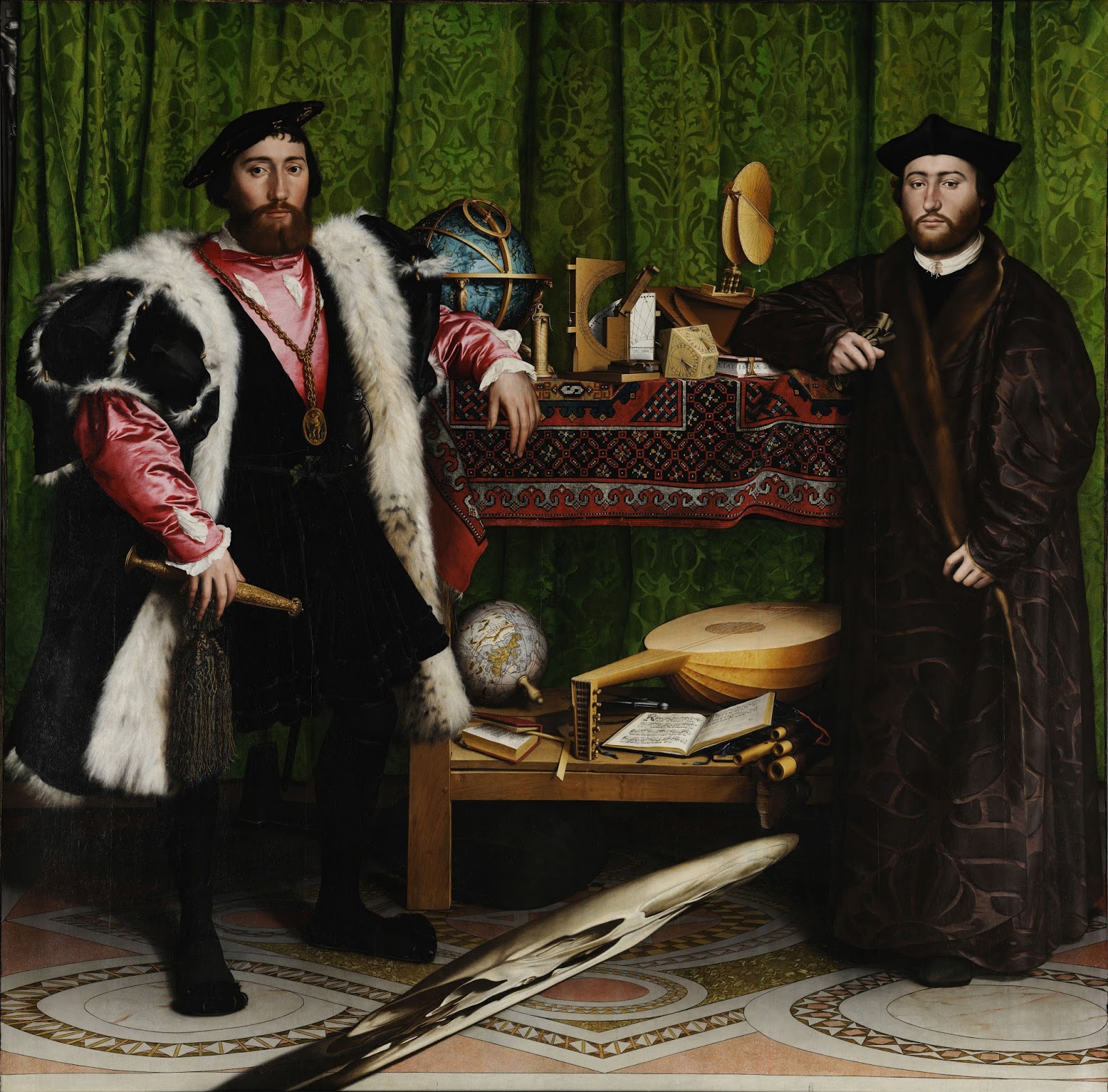Hans Holbein the Younger: The Ambassadors (1533)
(National Gallery, London, UK)
A famous painting by the German artist Hans Holbein the Younger (1497-1543). This painting is a double portrait of two foreign ambassadors of the court of king Henry VIII of England. standing on the left is the 29 year old French ambassador Jean de Dinteville (1504–1555). On the right is the 25 year old Georges de Selve (1508 – 1541), bishop of Lavaur, who acted as ambassador for several countries such as the Republic of Venice, Austria, to the Pope in Rome, to England, Germany and Spain, on several occasions and a friend of Jean de Dinteville. Both men were in London between 1531 and 1533 to discuss a possible marriage between king Henry VIII and a French princess (the negotiation eventually failed and Henry married with Anna Boleyn). In the middle is a closet with several Scientific and mathematical instruments such as a torquetum, a polyhedral sundial, a quadrant, a disassembled Universal equinoctial dial, a shepard dial and a terrestrial and a celestial globe. Also visible is a a lutheran Psalmbook, a case of flutes and a lute. The instruments refer to the common interests of both men and their position as ' men of the world" (homo universalis). A famous part of this painting is the weird object in the foreground. This object is a human skull (a memento mori) which is a shown in an anamorphic perspective (it requires the viewer to stand in a certain position to reconstitute the image - in this case high on the right side, or low on the left side). Painting from 1533.
